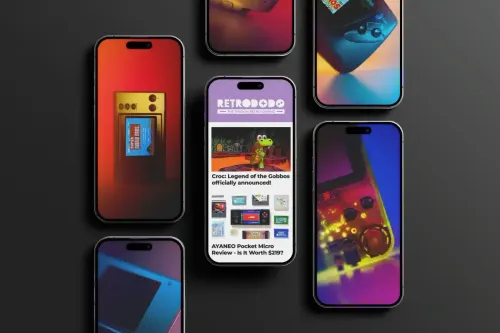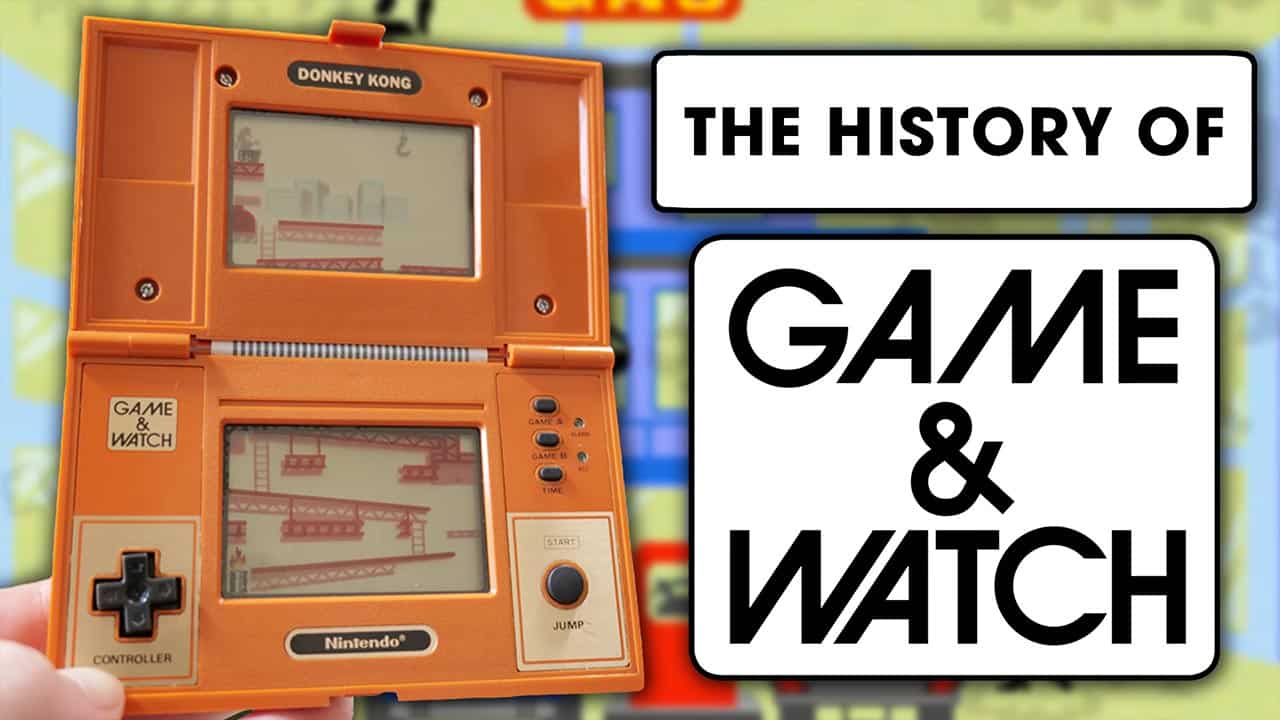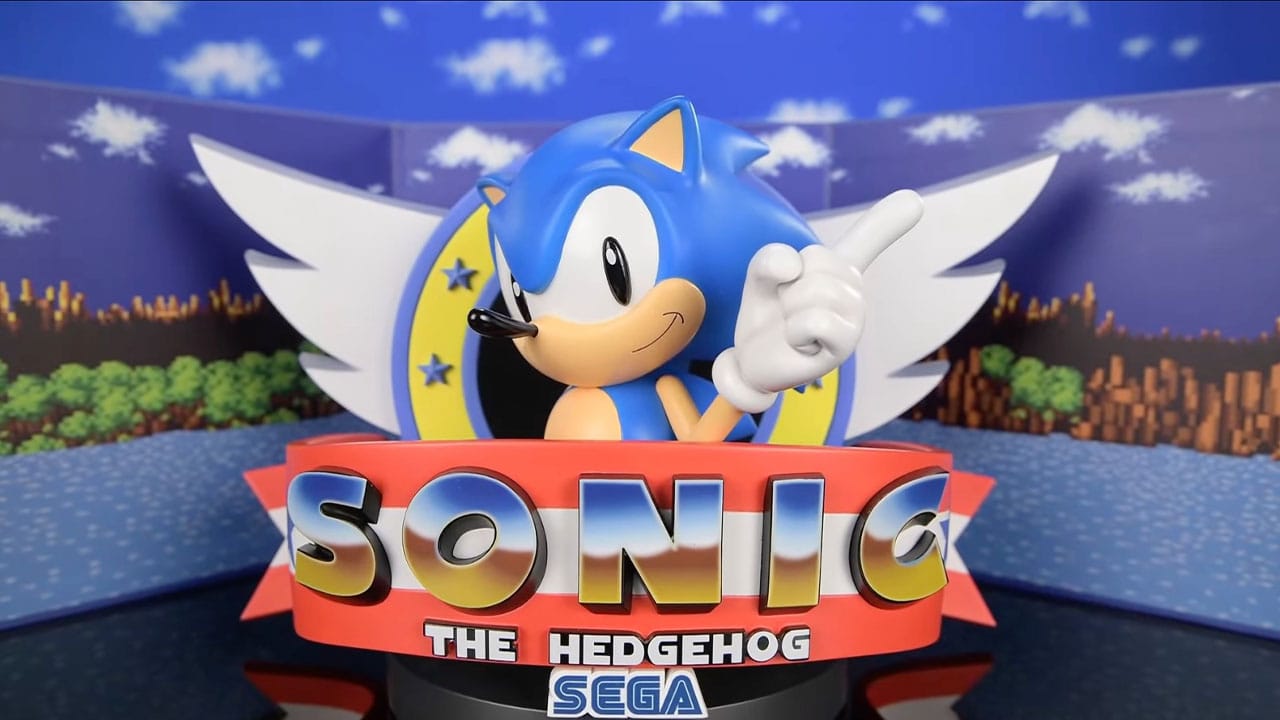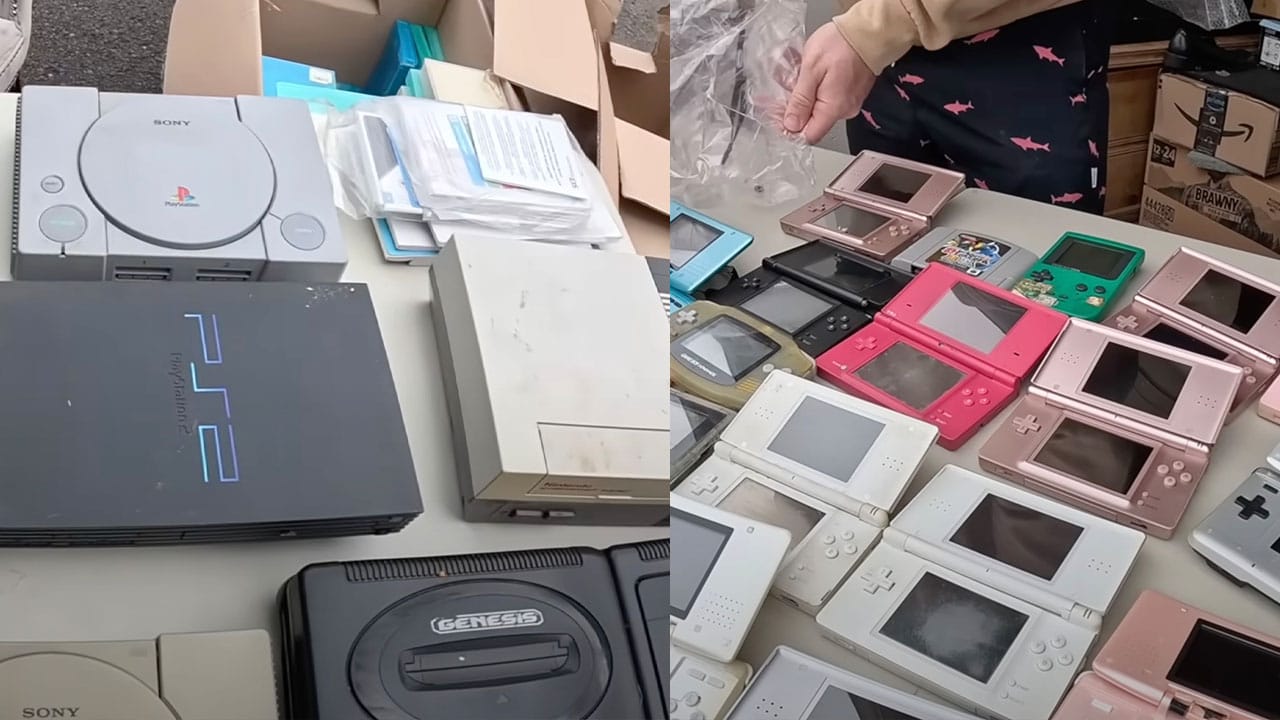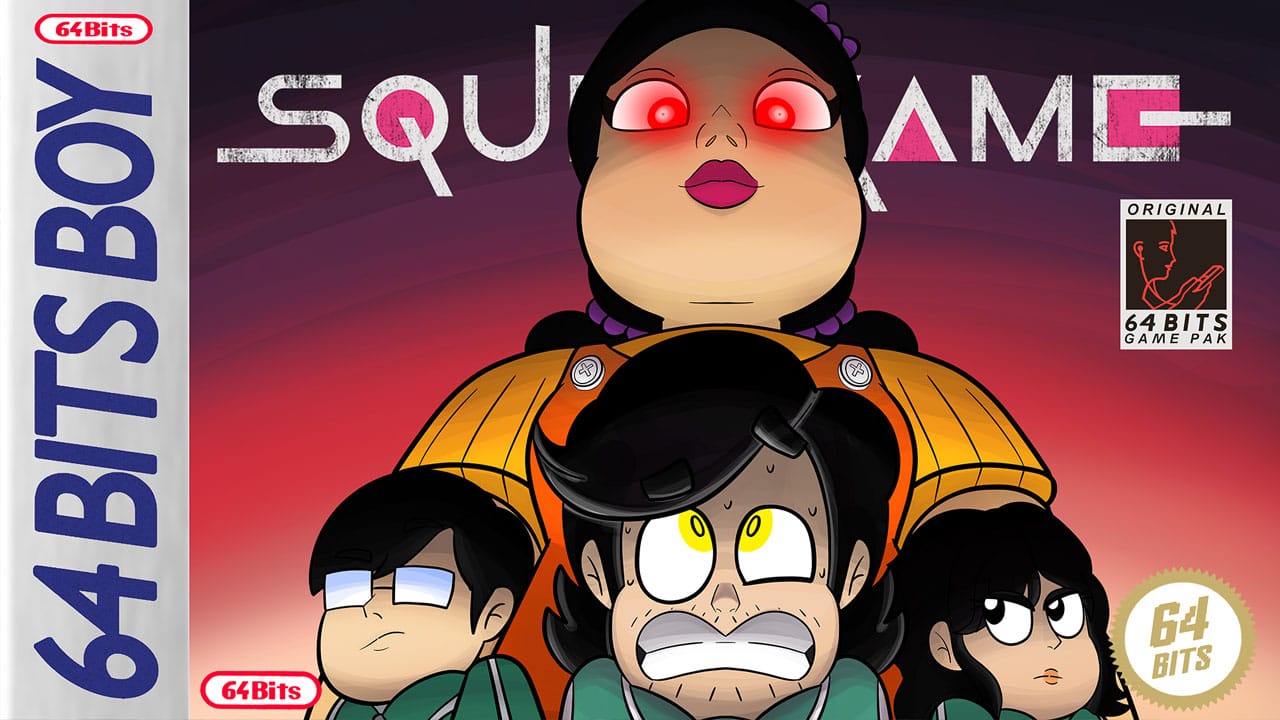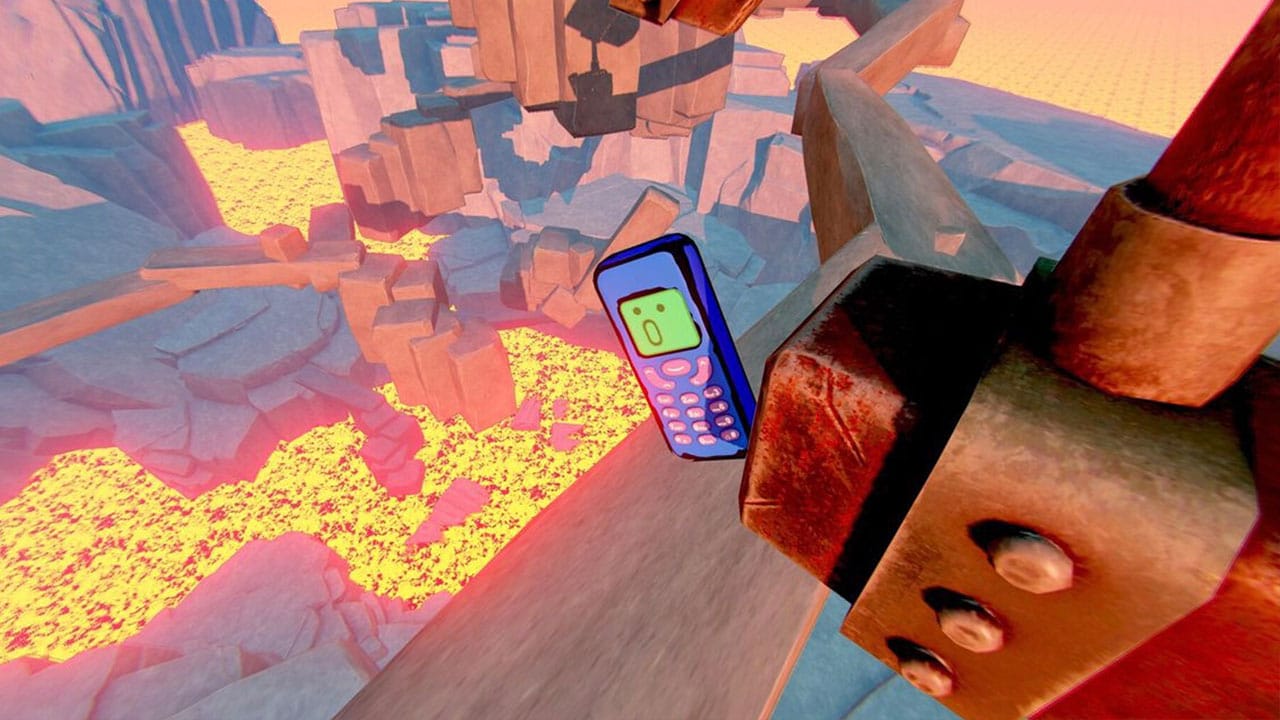If you’re a fan of handheld gaming in all its forms, then grab a cup of coffee, kick back, and get ready to soak up some new knowledge. It’s time to check out the history of Nintendo’s Game & Watch handhelds!
Nintendo are known for creating several of the best selling handheld devices ever made, from the Game Boy to the 3DS. Before the Game Boy rose to success, however, there was a series of handhelds known as the Game & Watch.
And in order to talk about why these are so special, we need to go back to the very beginning of Nintendo’s story.
Are you sitting comfortably?
Good, then let’s begin!
The Beginnings Of Nintendo
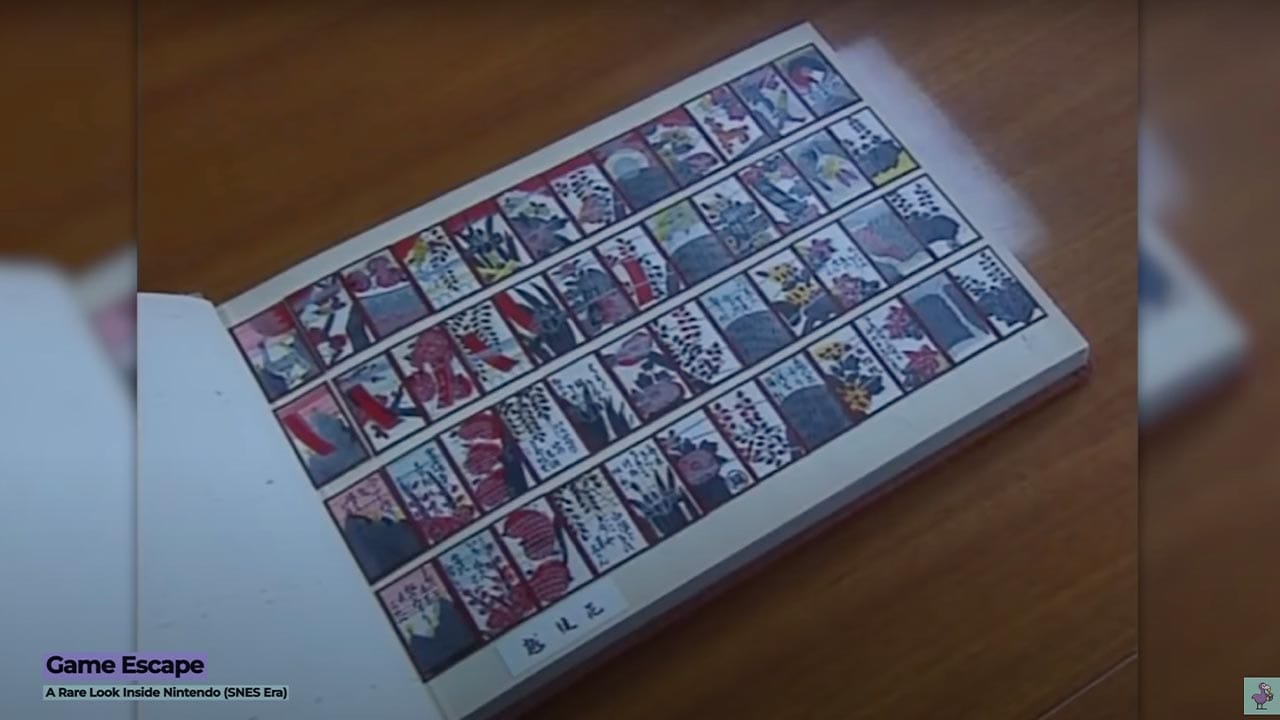
Nintendo is a much older company than most people realise, being founded all the way back in 1889 and initially being a manufacturer of different types of playing cards.
Things started to turn for the company though in 1965 when they hired a man named Gunpei Yokoi.
The company was starting to struggle due to the demand for playing cards dropping due to more variety in other hobbies such as the rise of pachinko machines and better access to other social activities like bowling.
In order to stay ahead of the curve they went through a huge restructuring, putting more effort into the development of new products, and one of these new development teams was going to be focused on toys.
The head of this new unit? None other than Gunpei Yokoi, who happened to have a knack for manufacturing creative products.
Toy-tally Awesome Ideas

At first they were making standard stuff, chess, majong and other classic board games, however they also started dabbling in electronic toys, including the Beam Gun which is considered one of the earliest examples of an affordable light gun.
Despite featuring similar technology, this wasn’t your typical video game light gun though, and instead had you shoot a target on a physical toy which made it fall over.
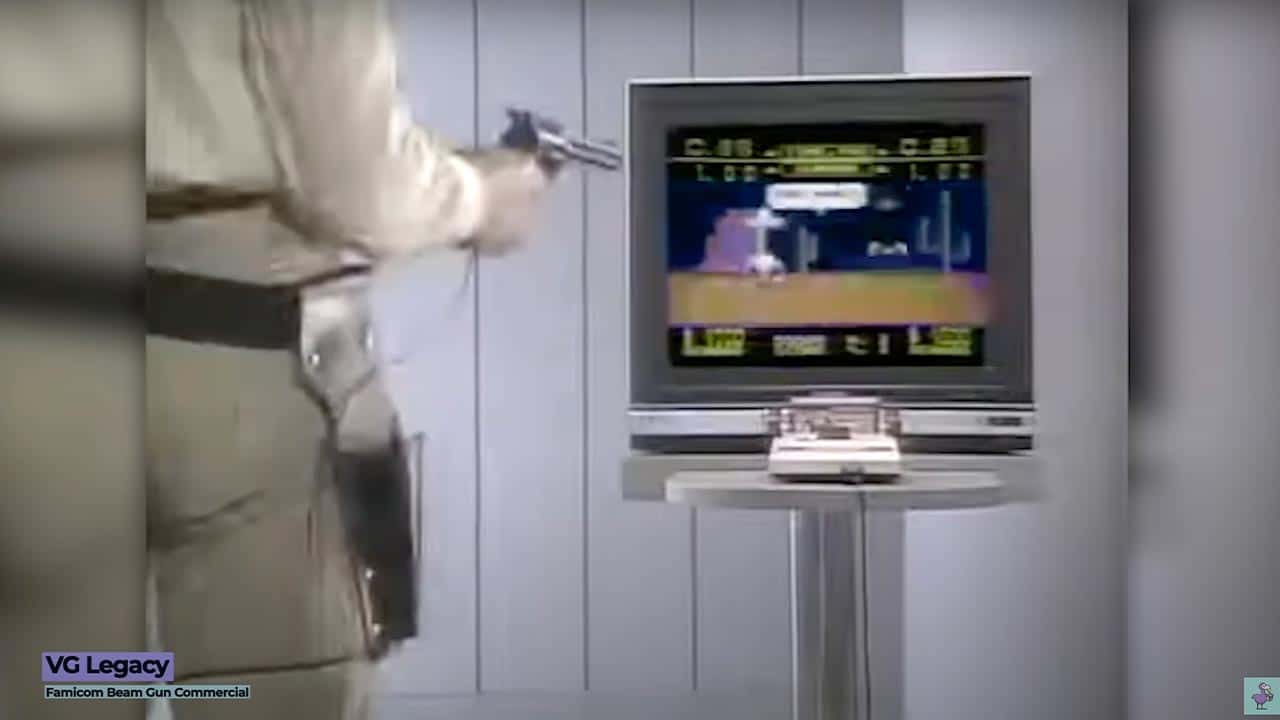
It wasn’t until 1972 that Nintendo used their prior experience with the Beam Gun to create the Shooting Gallery for the Magnavox Odyssey, officially marking Nintendo’s first foray into video games.
Meanwhile, Gunpei Yokoi continued to show his skill at creating hit products, with the Ultra Hand, Ultra Machine, Ultra Scope and the Love Tester being some of the toys he’s credited with creating.
Nintendo continued making both video game related products as well as standard toys, but the major turning point for the company happened in 1980 when the original Game & Watch released.
Nintendo had already achieved success with their Color TV-Game line of home consoles, having sold three million units and making them the highest selling first generation consoles.
These were only available in Japan, however, so it wasn’t until the release of the Game & Watch that Nintendo would become an established name across the globe.
The Birth Of The Game & Watch

But how was the Game & Watch born?
Reportedly the idea for a portable gaming device came to Gunpei Yokoi as he was on a train and watched as a bored passenger fumbled around with a calculator, typing in random numbers to pass the time.
Yokoi knew that there had to be a better way of entertaining yourself on your work commute, and thus the spark of an idea that would literally change the landscape of video games as we knew them was ignited.
That might sound like I’m being dramatic, but the Game & Watch was the very first handheld portable gaming device ever created.
Without this, who knows if video games as we now know them would even exist. The portable gaming landscape at the very least would be a very different place, and the huge success of the Game Boy and even the Switch can have their roots traced back to the humble Game & Watch.
So yeah these things are a pretty huge deal.
Pitching The Game & Watch
Yokoi apparently took his concept for the Game & Watch to the higher-ups at Nintendo and Sharp and immediately received the green light to produce several units.
Even the executives must have seen promise in the idea of portable gaming.
The Game & Watch used the same technology found in a calculator, having a simple LCD screen and primitive graphics.
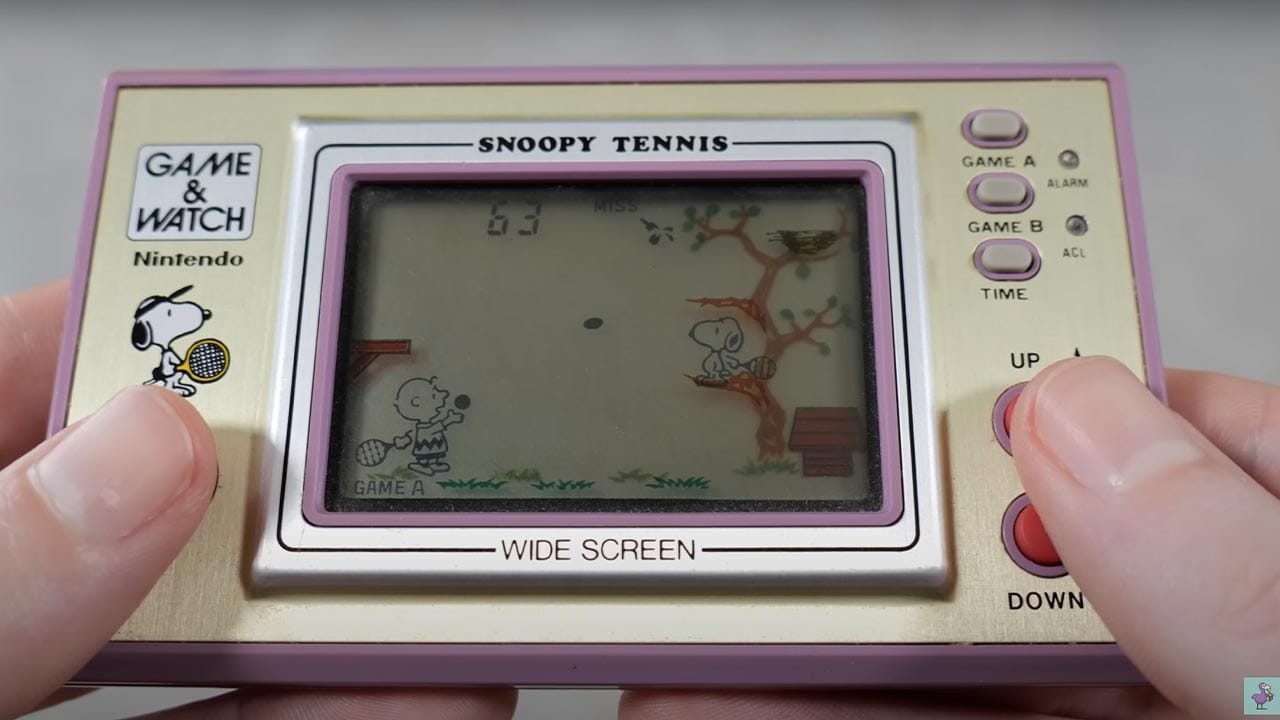
Instead of having any kind of real fluid animation, the graphics simply flicked between different still pictures to replicate movement. And because it used cheap disposable batteries, the cost of the Game & Watch systems were not only low to manufacture but also affordable for the customers too, costing 5,800 yen in 1980.
When adjusted for today’s inflation, that’s equal to approximately £50 or $63.
Bare in mind though that not only was there nothing else like this on the market at the time, but it also doubled up as a clock when not in game mode, hence the name Game & Watch.
Now that’s good value for money!
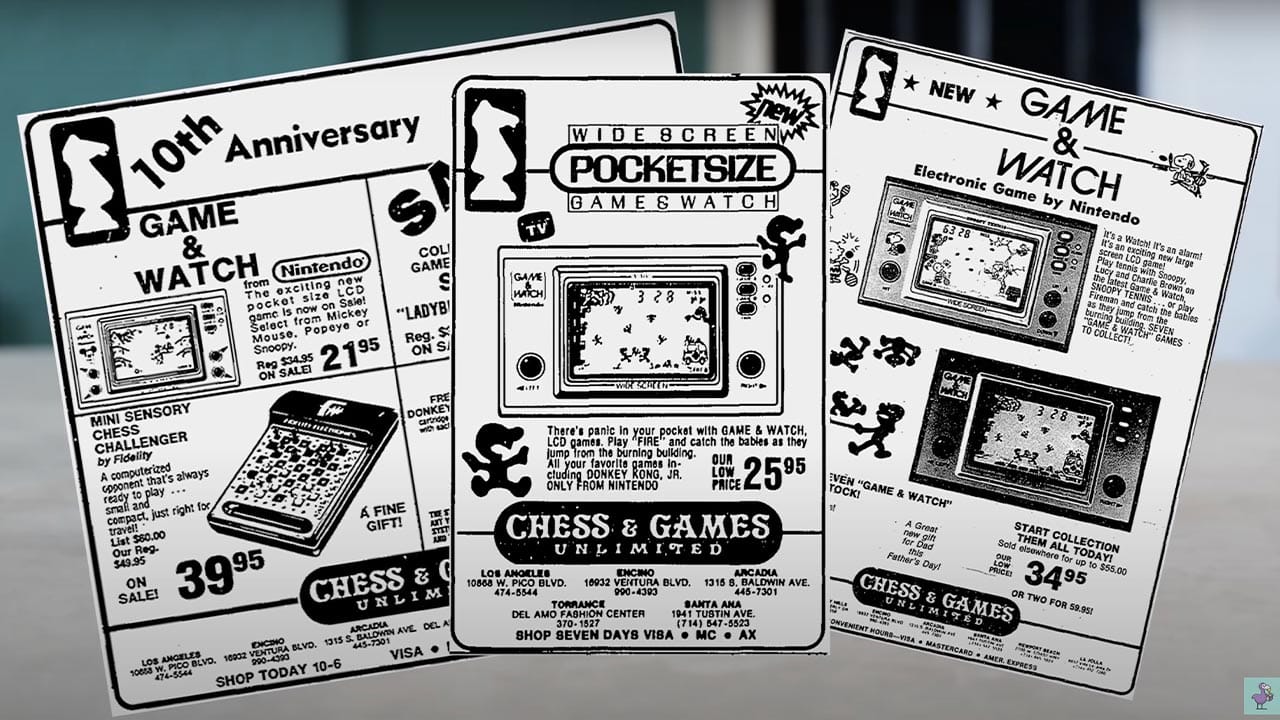
Single Game, Endless Hours Of Fun
Game & Watch systems were different to handheld devices we typically see today due to them not having interchangeable cartridges, each device being specifically made to play a singular game.
There were a whopping 59 of these released between 1980-1991 and they were a massive success, selling upwards of 43 million units across the world.
I think it’s safe to say that they helped to put Nintendo on the map as a serious video game hardware and software manufacturer.
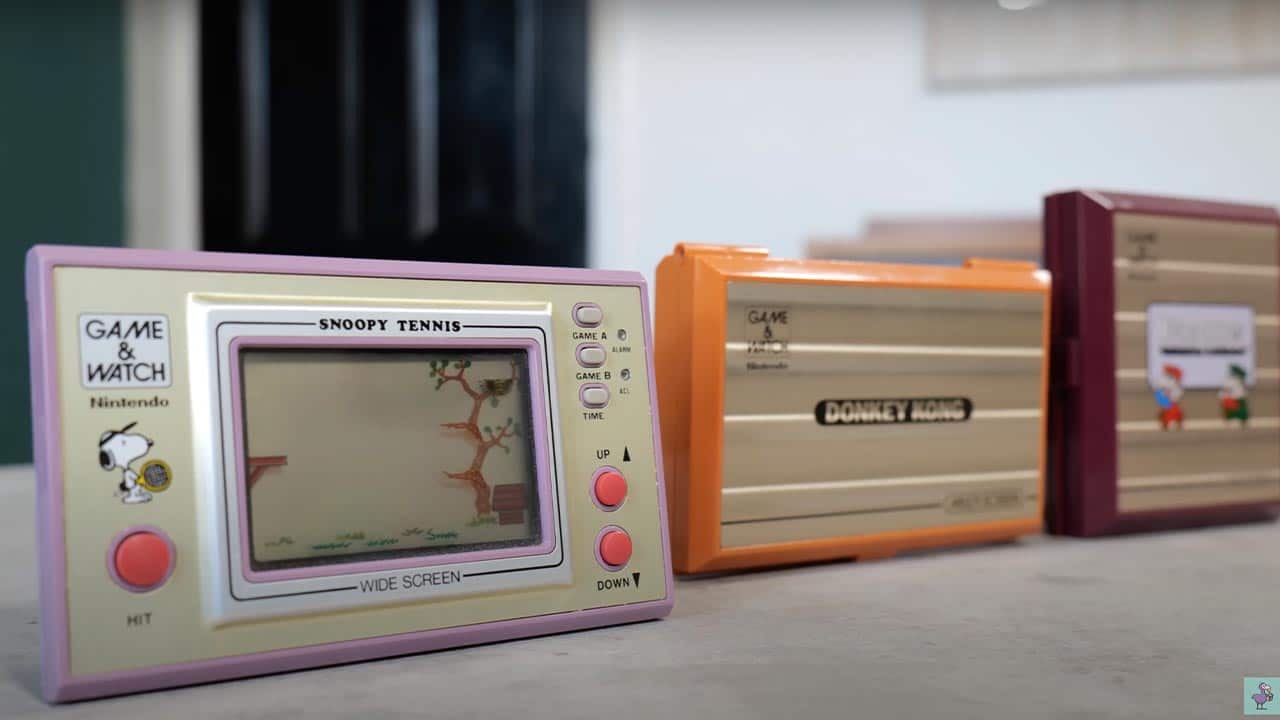
In Japan the release was reasonably straight-forward, and the initial five games in the Game & Watch line were known as the Silver Screen models.
These consisted of Ball, Flagman, Vermin, Fire, and Judge, and while these did get a release in North America in the same year, four of them were originally distributed by a company called Mego under the name Time-Out instead of Game & Watch.
The names of these four games were also altered, with Ball being ‘Toss Up’, Flagman being ‘Flag Man’ (that’s with an added space), Vermin being ‘The Exterminator’ and Fire being ‘Fireman Fireman’.
What Happened To The Mego Time Out Handhelds?

Despite this era of Nintendo being a massively important part of the company’s history, these Mego Time-Out devices are hardly documented online and there seems to be very little information about them.
From what I’ve gathered, Mego was given the licence to produce these devices just before Nintendo of America got properly set-up, but after a very short period they were then able to manufacture them on their own, which is when the standard Game & Watch branded devices started to get released throughout the States with their original names.
This is why Judge didn’t get a Time-Out branded device, with this being the last of the five silver screen Game & Watch games – Nintendo must have been in a position to manufacture this one themselves by that point.
Silver, Gold, & Wide Screen Series
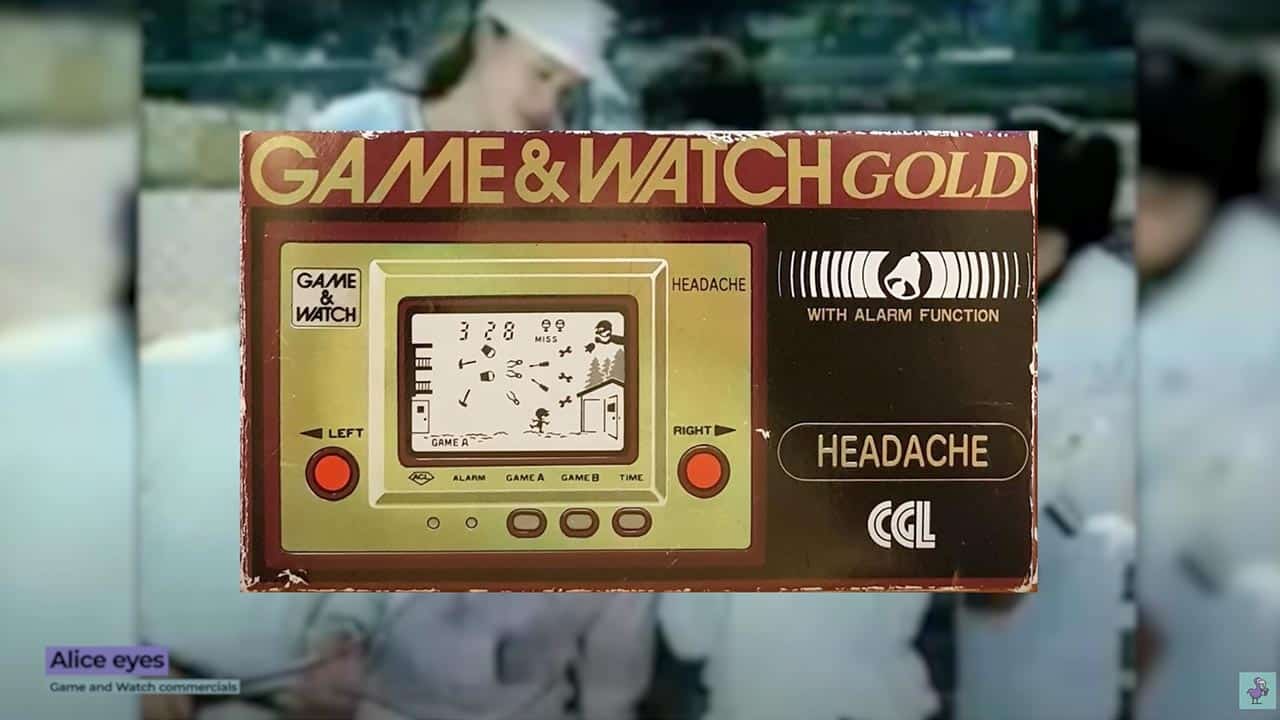
After the 1980 run of Silver Screen devices came the 1981 Gold Screen series which features the rarest of all of the Game & Watch games, Headache.
If this doesn’t sound familiar it might be because it was only known by this title in the UK.
In every single other territory in the world it was called Helmet, and you can find this version fairly easily.
The name change is simply due to the fact that Helmet is classed as a derogatory term in the UK so the name was changed here, and this altered Headache version only sold around 6,000 copies.
Also released in 1981 was the Wide Screen series and this is where production of the Game & Watch really kicked up a gear and provided some of the best Game & Watch games.
There were five Silver Screens and three Gold Screens, but a total of ten Wide Screens, and it’s also in this line where we started to get some licensed games show up featuring Popeye, Mickey Mouse and Snoopy.
Snoopy Tennis is one of the Game & Watch devices I actually have in my collection releasing in 1982, making it the oldest game I currently own.
We also saw our first re-release with a wide screen version of Fire, one of the original silver screen games.
DK! Donkey Kong Is Here
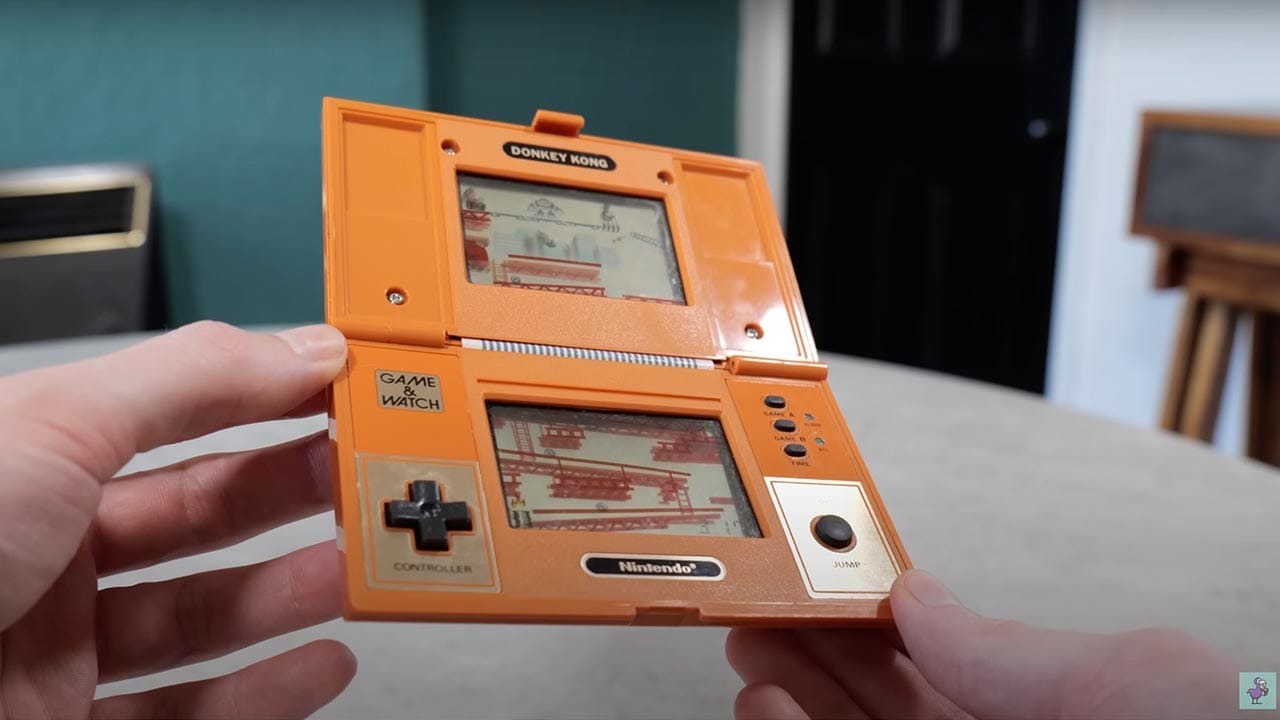
In 1982 we also got the debut of the Multi Screen variants and these are probably my favourites in the history of Nintendo’s Game & Watch handhelds.
By far the best selling of any Game & Watch device was 1982’s Donkey Kong. It was helped by the massive success of the original arcade game released a year prior in 1981 and also by this new multi screen form factor.
Donkey Kong wasn’t the first Multi Screen Game & Watch, being slightly pipped to the post by Oil Panic which released only a few days prior, but Donkey Kong sent this new design into the spotlight.
This thing alone sold 8 million units!
Donkey Kong is a particularly interesting device, not only because it was the first Game & Watch device to feature previously existing Nintendo characters.
It features a clamshell design, which quite clearly served as the inspiration for the Nintendo DS, and even more importantly, it was the very first time that a d-pad was ever seen.
This d-pad predates the NES, or rather the Famicom as it was known in Japan, by a whole year!
The Game & Watch not only changed the landscape of portable gaming, but with Donkey Kong’s d-pad, it even had a gigantic impact on home console gaming too.
Without the d-pad, controllers nowadays would probably look completely different, and it’s safe to say that this particular Game & Watch has impacted practically every single video game controller that you’ve ever used.
Gunpei Yokoi really was a legend! He practically invented handheld gaming, designed all of these Game & Watch systems and now he’s even invented the d-pad too; what a guy!
The Rise Of The Multi Screens
15 multi screen devices were made in total, and while most of them used this same DS style design, there were three that used a horizontally opening design instead.
One of these is 1983’s Mario Bros which not only opens like a book, but instead of using the d-pad boasts three interesting buttons that almost feel like light switches.
One of the things I love about the Game & Watch series is that all of these devices have their own little quirks and design elements that make each one stand out. It makes them pretty interesting to collect and play, and you can’t really replicate that through any kind of emulation.
1982 brought the final standard variant of the Game & Watch with the New Wide Screen range. These were based on the original run of wide screen devices but featured much more colourful exteriors, with the final one being Mario the Juggler releasing in 1991.
Game & Flop – The Ideas That Didn’t Work As Well
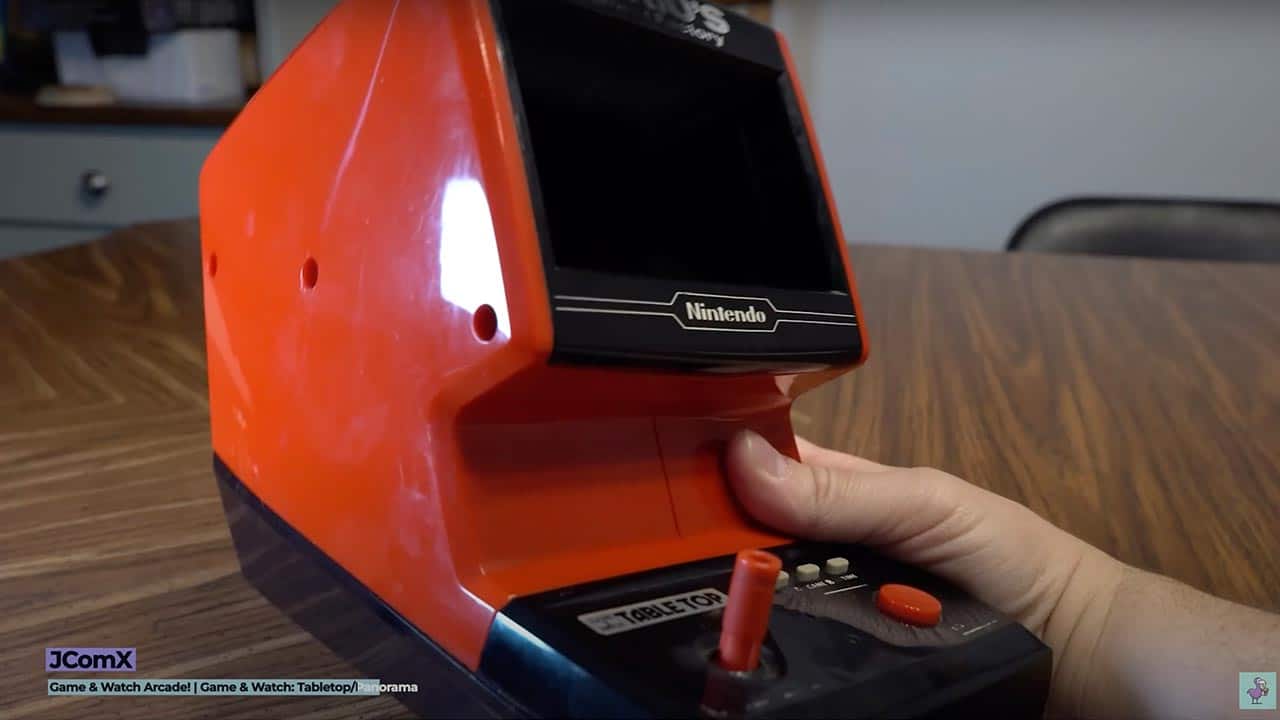
Before that in the history of Nintendo’s Game & Watch handhelds, we actually had a sort of side series to the main Game & Watch units called the Game & Watch Table Top which launched in 1983.
These were a massive departure from the design of the traditional Game & Watches and were much more bulky, requiring much bigger C batteries and even featuring colour screens too.
The table top units weren’t exactly portable though and ended up selling much more poorly than the standard Game & Watch series, only receiving a total of 4 games in their lifespan.
Then we had the Game and Watch Panorama Screen line which was much more portable than the Table Top series. It also featured colour screens, but the gimmick here was that the game was actually projected down onto a mirror and you played the game looking into the mirror instead of a typical screen.
Why, I can hear you ask?
This is because in order to give the game colour it needed a light source, and backlighting the screen would have made the device way too expensive. So instead, natural light enters through the top of the section that you pull up and shines onto the LCD display, which in turn is displayed on the mirror which allows you to see the gameplay.
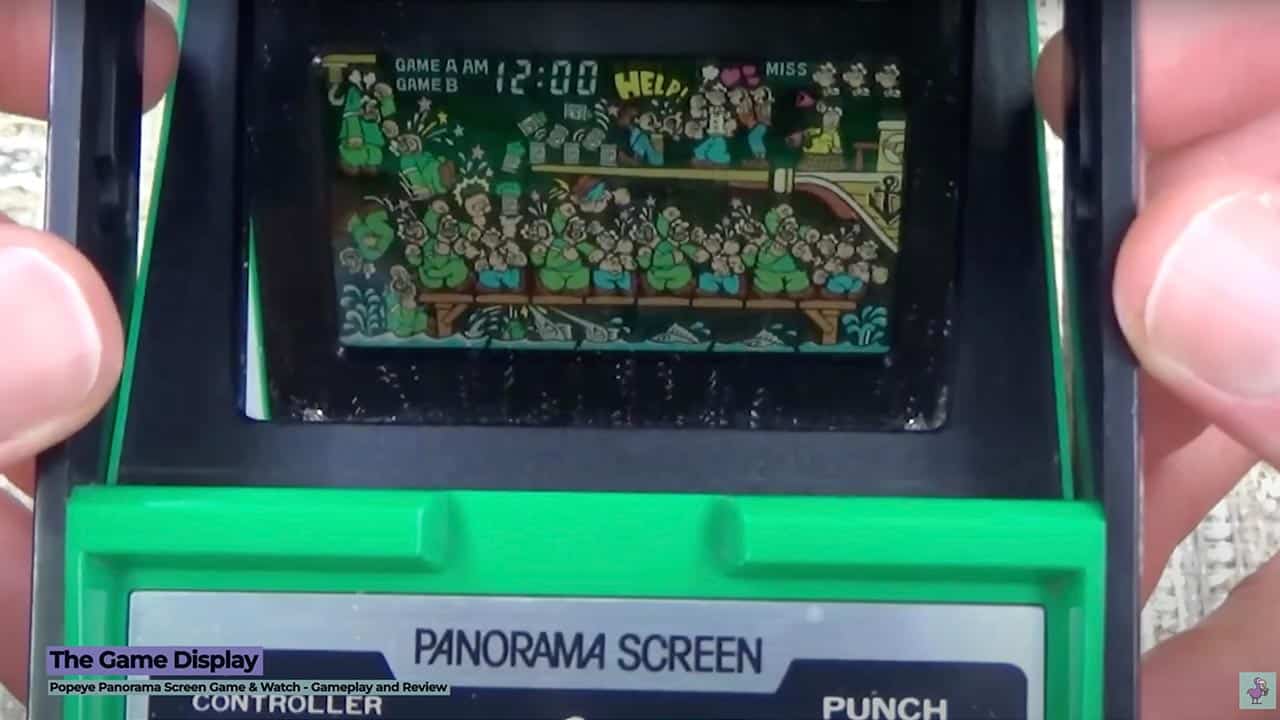
The Table Top variants also use this exact same mirror trick too, but with the Panorama Screen, it’s far more pocketable in size and you can more clearly see what’s happening to make the colour screen work.
Though, as you might guess from the title of this segment, they didn’t sell as well as the standard Game and Watch systems and were discontinued after 6 games. That’s still better than the Table Top though!
Step Into A World Of Super Color
Next up we have 1984’s Super Color variants of which only two were ever made. These much more closely resembled the normal design of the Game and Watch but were vertically oriented instead of horizontally.
The other obvious gimmick is that once again they feature colour, although in a much simpler way than the Table Top and Panorama Screen versions.
Instead, these consoles just feature solid blocks of different colours which go up the screen.
Normal Game & Watch systems did feature colour in their backgrounds through the use of art that was literally printed onto sheets of clear plastic, making up layers in the display which gave the image depth.
But the Super Color systems had actual coloured LCD images, whereas the moving LCD parts of the standard Game & Watches were always black.
I’m not sure exactly why, although I do have a few ideas which I’ll get into later as we delve into the history of Nintendo’s Game & Watch handhelds. But the Super Color Game & Watch variants once again didn’t sell too well and never received a second run.
The Micro Vs System
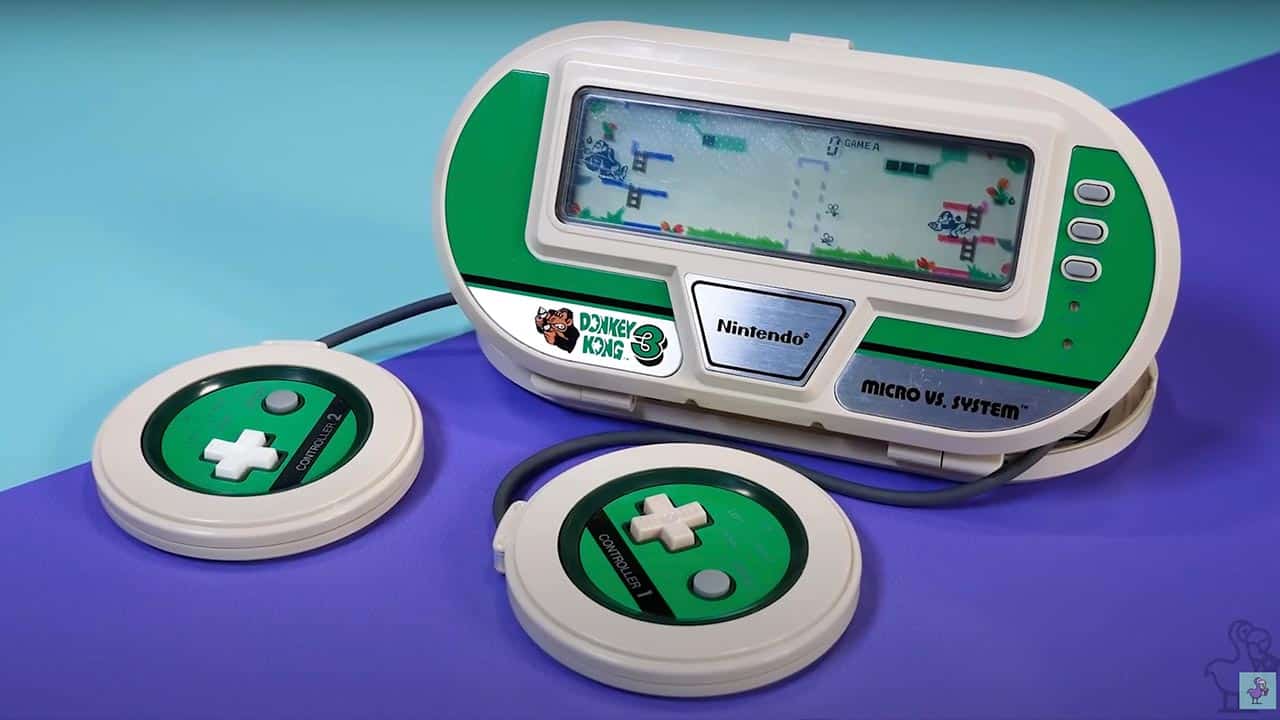
In 1984 we had the Game & Watch Micro Vs System where the main gimmick was on two player functionality, both players huddling over a screen together.
I actually remember playing Mario Bros with another person with each of us holding one side of the device and each controlling either Mario or Luigi depending on what side we were on, so the Micro Vs System just felt like the natural extension of that.
Guess what though; It didn’t sell that well and was discontinued after three games.
The Crystal Screen
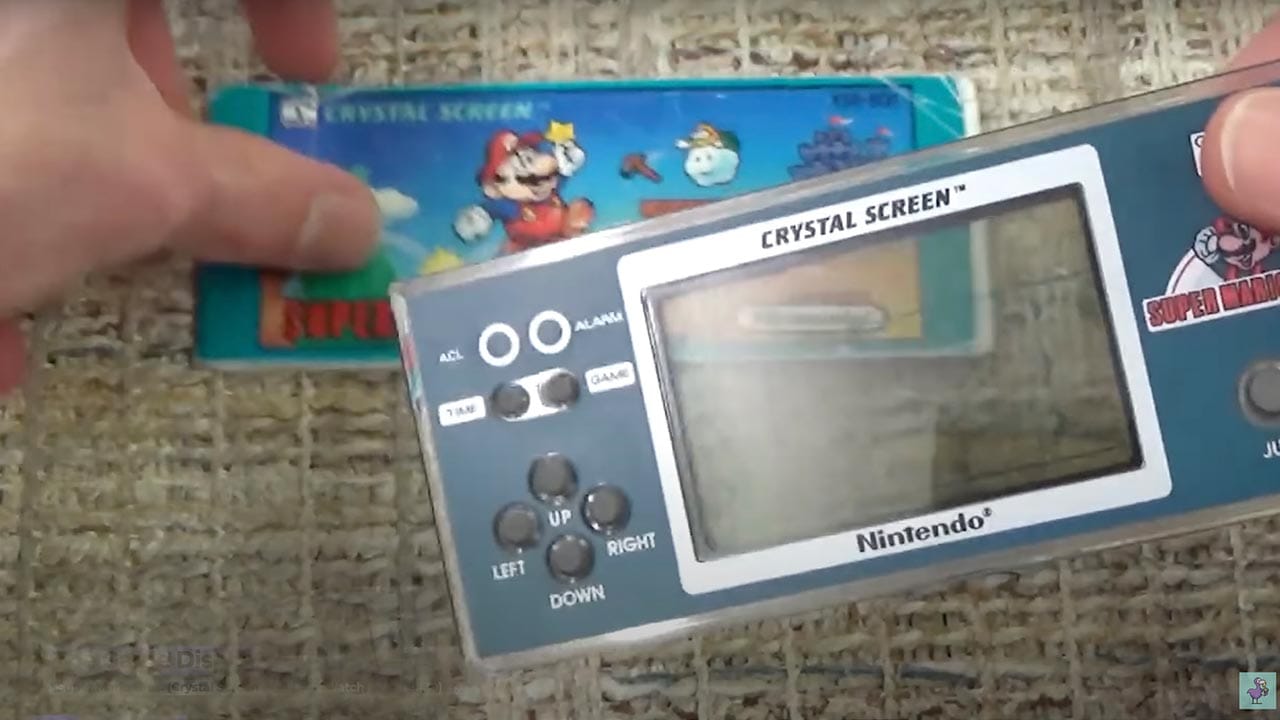
In 1986 we then had the Crystal Screen variants. As the name might suggest, these actually didn’t feature a back to the screen which allowed you to literally see through the LCD layers to whatever is behind the console.
The idea here is that you could use whatever background you want; you could draw your own picture and hold it against the back of the device, or you could hold it against a magazine or comic to give it any kind of background you can imagine.
Only three were made and they didn’t sell all that well, but you already guessed that!
Why Did The Later Game & Watch Devices Not Sell Well?
Now something to note is that despite the Table Top, Panorama Screen, Super Color, Micro vs System and Crystal Screen Game & Watches not selling as well, this probably wasn’t entirely Nintendo’s fault.
What else happened between the years of 1983 – 1985 which affected the history of Nintendo’s Game & Watch handhelds?
The video game crash of 1983.
This is a whole other story altogether, and to cover this properly would require its own video. Put simply, demand for video game devices was at an all time low due to the market saturation and low quality of most of the products being produced.
And this lack of customer interest probably heavily affected what Nintendo were attempting to do with the Game & Watch series at that point.
Had these variant systems released a few years earlier, they could have been a success. But unfortunately the timing was a bit off.
Luckily though, the release of the Famicom in 1983 and the NES in 1985 revitalised the game industry and saw Nintendo reach even greater heights than ever before, becoming a household name and many of its products entering the cultural zeitgeist.
Giving Way To The Game Boy

In 1989 the world was introduced to the Game & Watch’s successor, a little known device called the Game Boy which was yet again designed by Gunpei Yokoi.
Rather than requiring a brand new device for every game, the Game Boy instead was a singular console which featured swappable game cartridges, much more similarly to how the NES functioned.
It also used the same d-pad design from the Donkey Kong Game & Watch which at this point was a staple across every Nintendo product including the NES.
With the Game Boy taking the world by storm, the Game & Watch was largely forgotten, over-shadowed by the absolutely unheard of sales figures of its successor.
The Important Re-releases
It did receive some love in the form of a special edition re-release of the Game & Watch title that started it all, Ball, in 2010 and was offered to Club Nintendo members to celebrate the Game & Watch’s 30th anniversary.
This re-release functions exactly the same as the original release but featured slightly updated branding and quality of life updates like a mute option, but still remains very faithful to the original design.
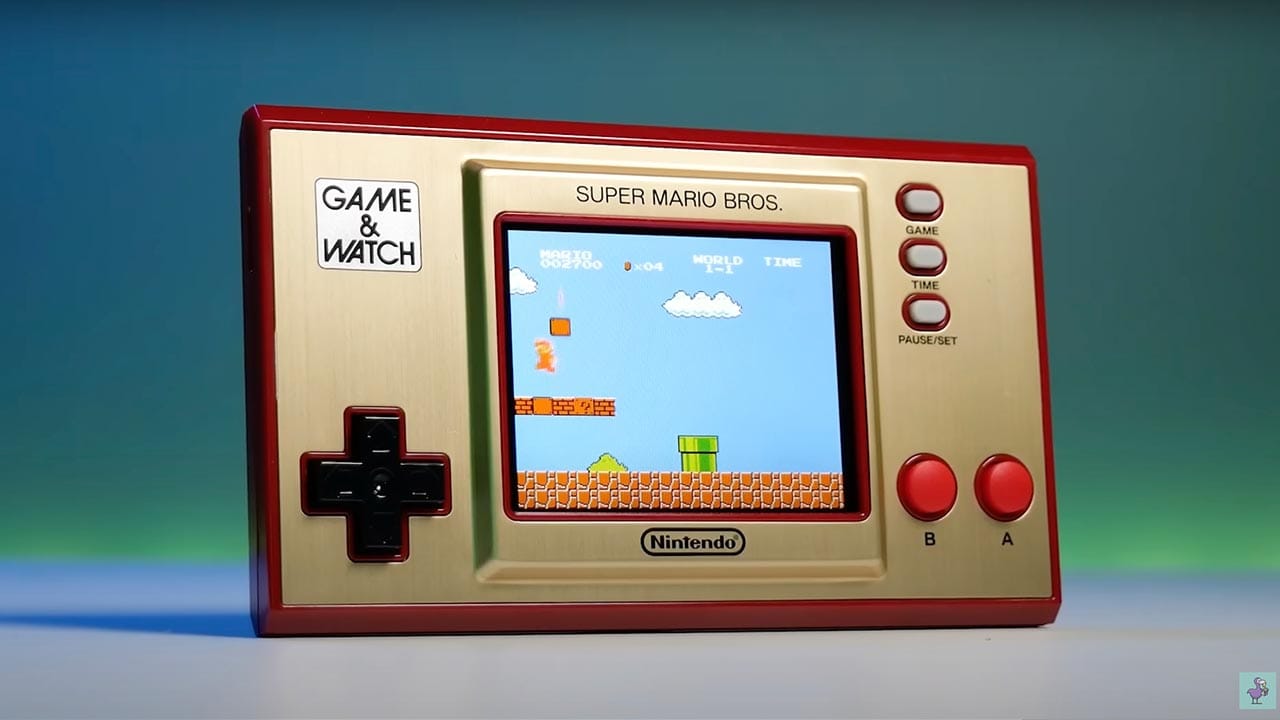
Even more recently came the 35th Anniversary Edition Game & Watch versions of Super Mario Bros. and The Legend of Zelda, released in 2020 and 2021 respectively.
If we’re being honest though, these aren’t actual Game & Watch systems and instead just feature the shell of a Game & Watch which plays the NES games from these series and features a few Easter eggs harkening back to the Game & Watch’s roots.
The screen itself is a standard LED screen, it features a normal modern rechargeable battery and elements of it’s design have been tweaked to be more practical for today’s audience, so really, with all of these design updates, I don’t think this can be considered an official Game & Watch. I
Still, it’s still very cool to see Nintendo’s early legacy respected like this though.
Nintendo Mini Classics
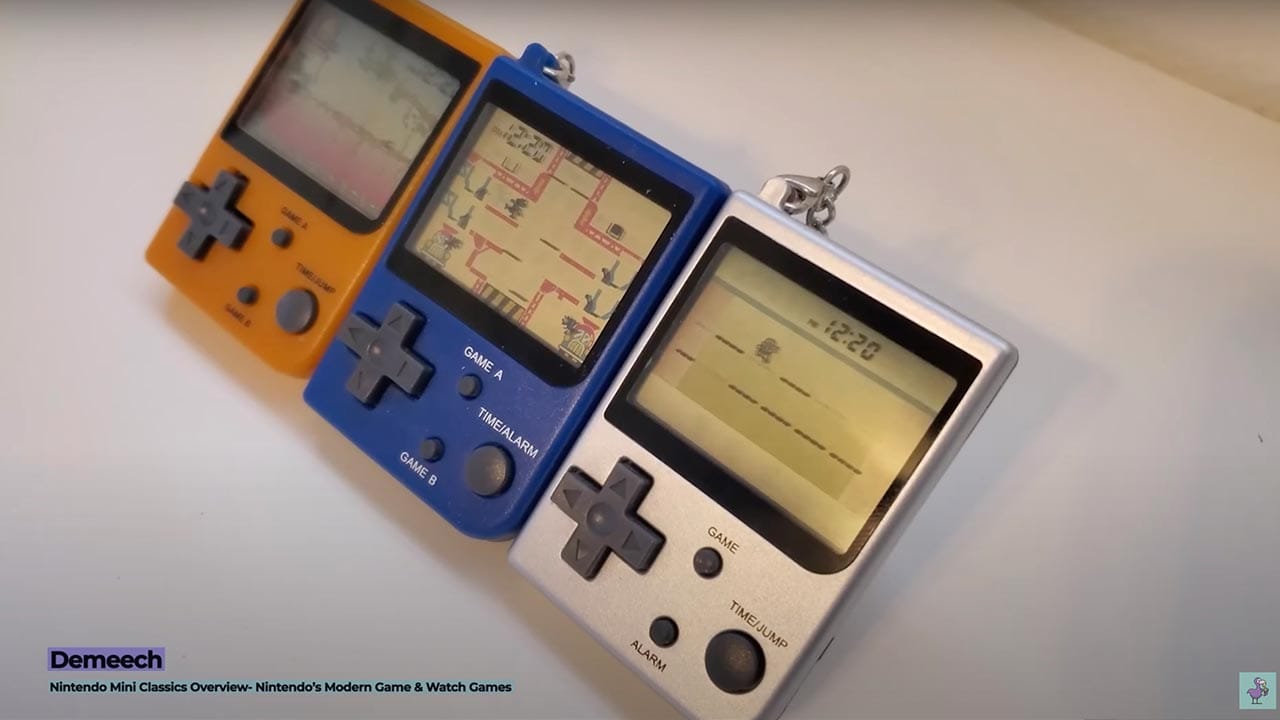
A lesser known series of hardware in the history of Nintendo’s Game & Watch handhelds is the Nintendo Mini Classics series.
These debuted in 1998 and were basically tiny devices which looked similar to the Game Boy, but featured LCD screens and had Game & Watch games on them.
Interestingly they also had a clock function which harkens back to the dual functionality of the Game & Watch. Even certain Multi Screen games were re-released as a Nintendo Mini Classic, featuring a flip screen to keep the gameplay authentic.
Weirdly, despite the Nintendo Mini Classics line pretty much existing as a way of cheaply re-releasing Game & Watch games, there were Nintendo Mini Classics released which featured brand new original games, most of which were based on existing properties or were licensed games.
These are basically the closest thing you’re ever going to get to a new official Game & Watch game; you’ve got stuff like Spider-Man, Yu-Gi-Oh, Smurfs and even Tetris (which was actually rumoured to get an official Game & Watch version at one point but never happened).
Game & Watch Games On Other Consoles
On top of these hardware re-releases, Game and Watch games have actually quite frequently been re-released in compilation packs and on digital stores, starting with the Game & Watch Gallery series which spanned five games across the Game Boy line of systems.
This is probably one of the more accessible ways to play a lot of these Game & Watch games; they not only offer the original versions of a selection of titles but even modernised versions too, which have been updated with new graphics and controls.
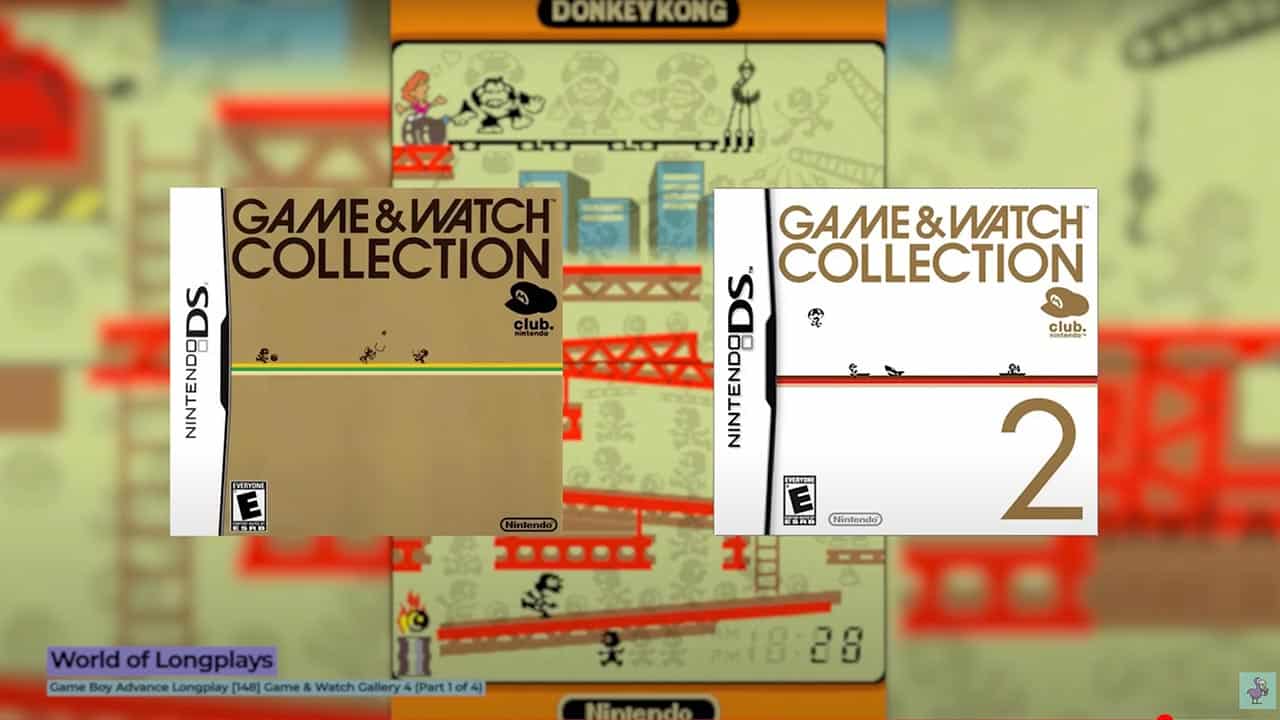
We then had the Game & Watch Collection series which weirdly was only available to Club Nintendo members.
And this was interesting because these were released on the DS, allowing the Multi Screen games to be played in a more authentic manner, utilising the top and bottom screens of the DS in the same way they would have in their original format.
With Nintendo starting to properly support online stores with the DSi and 3DS, certain Game & Watch games were available to purchase individually on the eShop too.
The selection offered was actually quite small, however, only having nine titles in total to choose from.
Final Thoughts…
Going forward, what I would like to see with the future of the Game & Watch is potentially an officially made, purpose built device which can accurately emulate every single Game & Watch game ever released.
I suppose it would be akin to the NES and SNES Classic Editions, only a handheld which was made entirely to play Game & Watch titles.
That way you could go back and experience one of Nintendo’s earliest ventures into the video game space and see for yourself how revolutionary this would have been at the time without needing to go out and spend thousands on buying 59 individual devices.
And with that, we’ve covered the entire history of Nintendo’s Game & Watch handhelds! Who would have thought that there would have been this much to talk about with such primitive devices!
Still, their legacy can’t be denied. Without these things, not only would Nintendo probably be in a very different place right now, but I would say the entire game industry would look different too.
Home consoles and Handheld devices alike owe a lot to these little guys.
Thanks for checking out our article on the history of Nintendo’s Game & Watch handhelds!
If you’ve ever played a Game & Watch before, then let us know what your favourite device is by visiting us on Facebook, Twitter, or Instagram!

